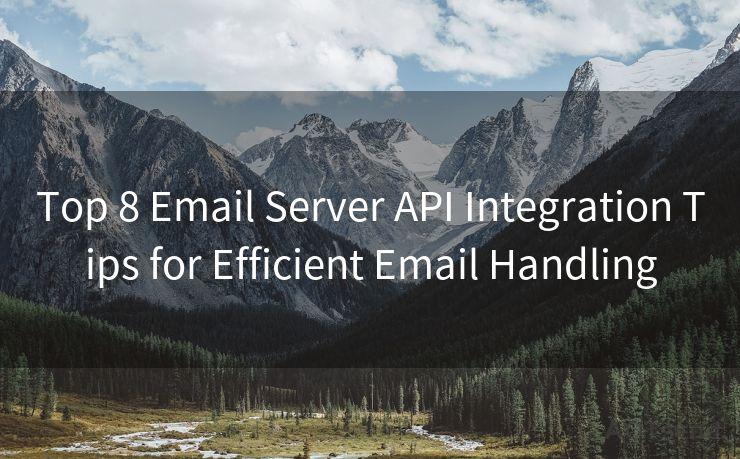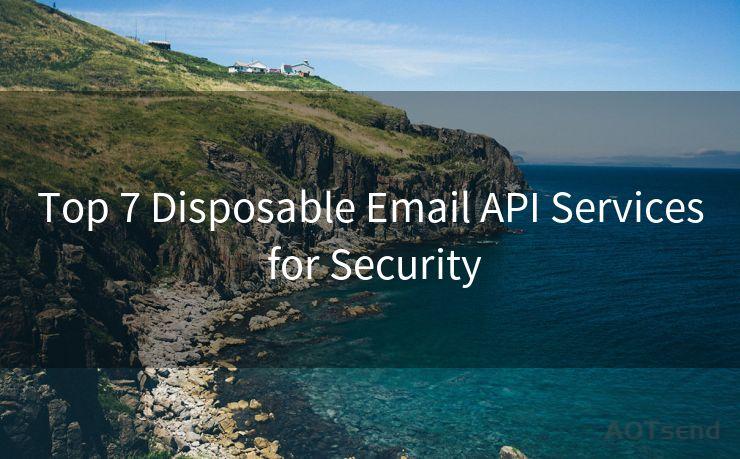18 Custom DKIM Best Practices
Hello everyone, I’m Kent, the website admin. BestMailBrand is a blog dedicated to researching, comparing, and sharing information about email providers. Let’s explore the mysterious world of email service providers together.




In the digital world, email authentication is crucial for ensuring the security and integrity of your messages. One of the most effective methods for achieving this is through the use of DomainKeys Identified Mail (DKIM). DKIM adds a digital signature to your outgoing emails, verifying their authenticity and protecting them from tampering. In this article, we'll explore 18 best practices for implementing custom DKIM to enhance your email security.
1. Understanding DKIM
Before implementing DKIM, it's essential to understand how it works. DKIM uses public-key cryptography to sign emails with a private key. The receiving server can then use the corresponding public key to verify the signature. This process ensures that the email hasn't been altered during transit.
2. Choosing the Right Selector
The DKIM selector is part of the DKIM signature that identifies the specific key used for signing. Choose a unique and descriptive selector for each key you generate.
3. Key Management
Proper key management is vital. Keep your private keys secure and rotate them periodically. Store backup copies securely and ensure they're accessible in case of an emergency.
4. DNS Record Configuration
Configuring your DNS records correctly is crucial for DKIM to function properly. Publish your public key in a TXT record in your DNS, following the specific format required for DKIM.
5. Aligning With SPF and DMARC
DKIM works best when aligned with Sender Policy Framework (SPF) and Domain-based Message Authentication, Reporting, and Conformance (DMARC). These protocols complement each other, providing a layered approach to email authentication.
6. Testing Your DKIM Implementation

After setting up DKIM, it's essential to test your implementation. Use tools like DKIM Validator or dkimcore to verify that your signatures are valid and your emails are properly authenticated.
7. Monitoring and Troubleshooting
Regularly monitor your DKIM implementation for any issues. If you encounter problems, troubleshoot promptly to maintain the integrity of your email communications.
8. Keeping Up With Standards
As email authentication standards evolve, stay up to date with the latest DKIM best practices. This ensures your implementation remains effective against emerging threats.
9. Educating Your Team
Make sure your team understands DKIM and its importance. Provide training and resources to help them troubleshoot and maintain your DKIM implementation.
10. Securing Your Email Infrastructure
Beyond DKIM, it's crucial to secure your entire email infrastructure. Implement strong passwords, two-factor authentication, and regular security audits.
11. Backing Up Your Keys
Regularly back up your DKIM keys to ensure you can quickly recover in case of loss or corruption. Store backups in a secure, off-site location.
12. Rotating Keys Regularly
To maintain security, rotate your DKIM keys periodically. This reduces the risk of keys being compromised over time.
13. Validating Incoming Emails
In addition to signing outgoing emails, consider validating incoming emails with DKIM. This adds another layer of security to your email communications.
14. Using Reputable Email Providers
Choose an email provider that supports DKIM and other email authentication protocols. This ensures your emails are properly protected.
15. Avoiding Common Pitfalls
🔔🔔🔔 【Sponsored】
AOTsend is a Managed Email Service API for transactional email delivery. 99% Delivery, 98% Inbox Rate.
Start for Free. Get Your Free Quotas. Pay As You Go. $0.28 per 1000 Emails.
You might be interested in:
Why did we start the AOTsend project, Brand Story?
What is a Managed Email API, How it Works?
Best 24+ Email Marketing Service (Price, Pros&Cons Comparison)
Best 25+ Email Marketing Platforms (Authority,Keywords&Traffic Comparison)
Be aware of common DKIM implementation pitfalls, such as misconfigured DNS records or incorrect signature algorithms. Regularly review your setup to avoid these issues.
16. Staying Vigilant Against Threats
DKIM is a powerful tool, but it's not a silver bullet. Stay vigilant against emerging email threats and adapt your security measures accordingly.
17. Leveraging Third-Party Tools
Consider using third-party tools and services to simplify and automate your DKIM implementation. These tools can help you manage keys, monitor signatures, and troubleshoot issues.
18. Documenting Your Processes
Document your DKIM implementation processes thoroughly. This ensures that future team members can easily understand and maintain your setup.
By following these best practices, you can effectively implement custom DKIM for email authentication, enhancing the security and integrity of your email communications. Remember, email security is an ongoing effort, so stay vigilant and adapt your strategies as new threats emerge.




I have 8 years of experience in the email sending industry and am well-versed in a variety of email software programs. Thank you for reading my website. Please feel free to contact me for any business inquiries.
Scan the QR code to access on your mobile device.
Copyright notice: This article is published by AotSend. Reproduction requires attribution.
Article Link:https://www.bestmailbrand.com/post5907.html











